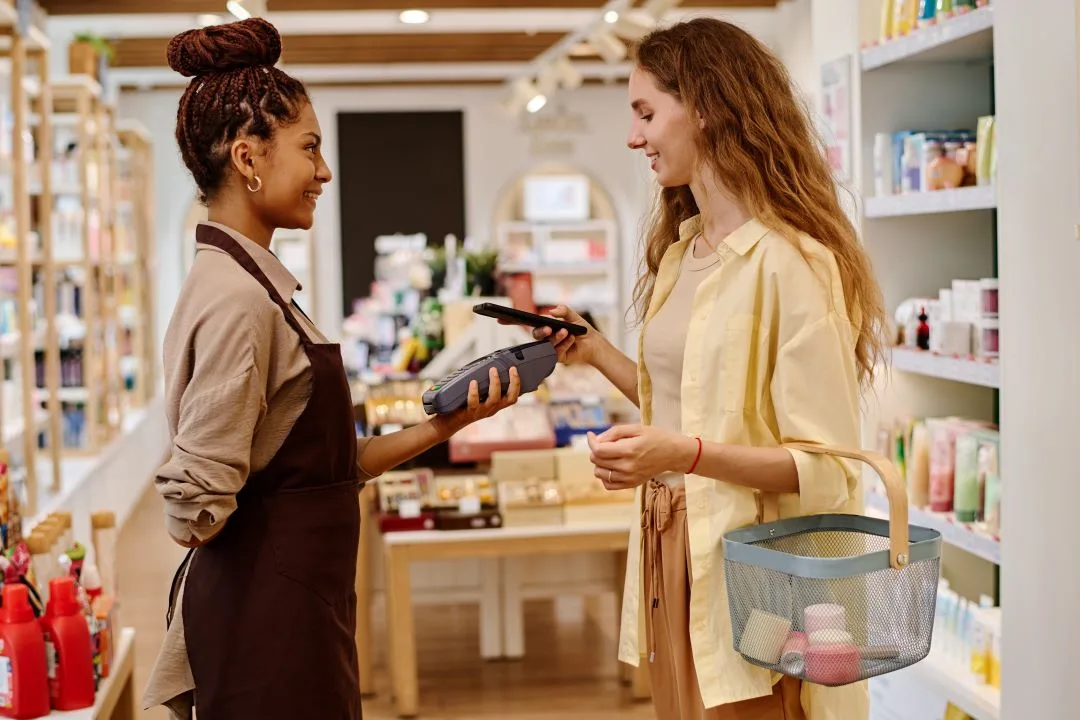It is now easier than ever to accept mobile payments. They are convenient and hassle-free, and they are a growing trend. If you haven’t accepted mobile payments, now is the time to start.
Throughout this article, you’ll discover the benefits of mobile payments and learn how to adopt this contemporary payment method for better acceptance rates.
What are mobile payments?
Mobile payments refer to transactions made using mobile devices. Instead of traditional payment methods like cash or credit cards, customers can pay through a mobile device, often with just a tap or a scan.
Mobile payment systems are built on sophisticated technology that allows for secure, fast, and convenient transactions. They can range from mobile payment apps to mobile payment gateways and devices. These systems leverage technologies like NFC (Near Field Communication) and QR codes to facilitate easy and efficient payment processes.
These payments can be categorised into three types:
Proximity payments are transactions made in close physical proximity to the point-of-sale (POS) system. One of the most common technologies enabling these types of payments is Near Field Communication (NFC). NFC mobile payments involve devices that communicate with each other when they are a few centimetres apart. Customers can simply tap their smartphone or a wearable device equipped with NFC technology near a POS terminal to complete a transaction.
Remote payments allow customers to make transactions regardless of their physical location relative to the POS. This type involves using a mobile device to make online purchases or pay for services over the Internet. Remote mobile payments can be facilitated through various applications or mobile websites, where users input their payment information or use stored payment methods to complete a purchase.
Mobile money transfers refer to moving funds from one account to another using a mobile device. This can include peer-to-peer transfers, where individuals send money to each other via their mobile phones, or more complex transactions like paying bills or transferring money between different financial accounts. Mobile money services are especially crucial in regions with limited traditional banking infrastructure, offering an accessible and secure method for managing and transferring funds. These services often require users to have an account with a mobile money provider, through which they can initiate and receive transfers using just their mobile devices.
Benefits of mobile payment solutions
Adopting mobile payment solutions offers a myriad of advantages. For businesses, it’s a pathway to expanding market reach and tapping into new, previously inaccessible demographics.
Integrating mobile payment options opens doors to untapped demographics, particularly the tech-savvy younger generation who prefer digital transactions over traditional methods. Expanding your market reach becomes seamless with mobile payments as you cater to a broader audience that values the ease and speed of modern payment solutions.
Mobile payments also enhance customer convenience, streamline payment processing, and positively influence consumer buying behaviour. Transitioning to mobile payment methods like Pay by Phone and Tap to Pay not only modernises your business but also signifies to customers that you value innovation and their convenience.
Mobile payment options have a profound impact on consumer buying behaviour. The convenience and speed of mobile payments encourage spontaneous purchases and foster a more streamlined checkout process, potentially increasing sales and customer retention.
How to implement mobile payments in your business
To successfully implement mobile in your business, consider the following best practices:
- Choose the right mobile payment system that aligns with your business needs and customer preferences. Adopting mobile payments using a mobile payment gateway is the future of transactions.
- Educate your staff and customers about the benefits and usage of mobile payment options. For staff, this involves a comprehensive training program that not only covers the operational aspects of mobile payment systems but also emphasises their security features and troubleshooting common issues. On the customer front, clear and concise communication is key. Informing customers through in-store signage, online platforms, and direct interaction about mobile payments’ convenience, speed, and security can enhance their shopping experience and encourage adoption.
- Ensure robust security measures are in place to protect transaction data and build customer trust. Security is a paramount concern in mobile payments. Businesses must ensure their mobile payment systems comply with the latest security standards and regulations. Implementing end-to-end encryption, secure payment gateways, and regular security audits can safeguard your transactions and enhance customer trust.
Incorporating mobile payments into your business isn’t just a step towards embracing new technology—it’s a stride towards future-proofing your operations, enhancing customer satisfaction, and unlocking new growth avenues. The journey towards digital transformation begins with a single tap. Embrace mobile payments and witness your acceptance rates soar to new heights.
For more information and to get started with mobile payments, learn about Trust Payments’ Tap to Pay offering.





